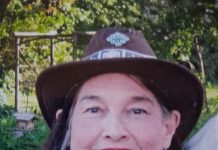Submitted by Mike Campbell
Watching from the sidelines this whole STA debate, as a former owner of Rentcottage.com I believe I have a unique perspective on this issue. My wife and I started rentcottage.com in 1995 and ran the business for 17 years. During that time we managed over 900 properties Ontario wide and over 10,000 bookings and was on call 24/7 to hear complaints from renters, cottage owners and neighbours.
From my experience at Rentcottage.com the main issues with STAs are:
• Noise disruption on people’s enjoyment of their property.
• Constant turnover of rentals especially booking through Airbnb for 1, 2, 3 night bookings.
• Overcrowding of cottages with too many people.
• An inability of neighbours to deal with issues, when they arise, no one to call to deal with a problem.
The other issue for the municipality, is how to deal with STAs given the municipality’s limited resources. To inspect and licence over 600 properties could take a couple of years and be very expensive.
So I got to thinking, why not have two levels of licencing one for low impact STAs and another for the larger properties that attract larger groups and have a greater impact on neighbours and the environment.
For the low impact rentals (defined as the use of a cottage similar to how a normal owner/family would use their place), I would suggest the following approach:
The municipality create a self registration portal website where STA owners can self-register their properties.
In order to qualify for self-registration an STA would have to meet the following criteria:
• Occupancy would be limited to two people per bedroom up to a maximum of four bedrooms. (keep numbers low, the lower the number of occupants the less issues there are)
• The Owner will provide the municipality with a 24-hour emergency contact in the event of an issue (empowers neighbours and municipality to deal with an issue when it arises).
•Have a minimum length of stay 5-7 days, (When people make a commitment to stay for a length of time there are less issues; you get away from the weekend partiers. Nightly rentals are more akin to a motel or hotel)
• The STA owner provides a web link to where they market their STA for rent. (This will enable the municipality to check to make sure they are not advertising a greater occupancy than they are licenced for)
• The owner makes a declaration that all floors have smoke detectors, and that there is at least one parking space available for each bedroom advertised.
Require that STAs have a sign at the end of their driveway displaying their registration number, (That way when there is an issue the property can be easily identified and action taken.)
Suggest that the municipality establish a reasonable fee for registration $200-$300, (make it too high and people won’t register and will simply go underground.)
Since the property will be used no differently than an owner-occupied unit and won’t be overcrowded, there will be no need to do a septic system assessment.
For larger units that accommodate large groups I would suggest that they undergo more detailed scrutiny, septic system inspection, separation distances from neighbours, privacy screening etc.
I think this self licencing would also work for B&Bs provided they are owner occupied and limited to three bedrooms as per the Zoning By-law requirements.
Based on my years of practical experience, I believe the above suggestions will provide a practical, straightforward way of dealing with STAs.
* * *
Moving to the Bruce Peninsula with his family as a teenager, Mike Campbell spent his final year of high school at BPDS, then studied Planning Tech at Sheridan College.
He joined Bruce County Planning in 1981 and was promoted to Senior Planner in 1990. He left Bruce County Planning in 1997 to devote his full attention to Bruce Peninsula Cottage Rentals, the precursor of Rentcottage.com











